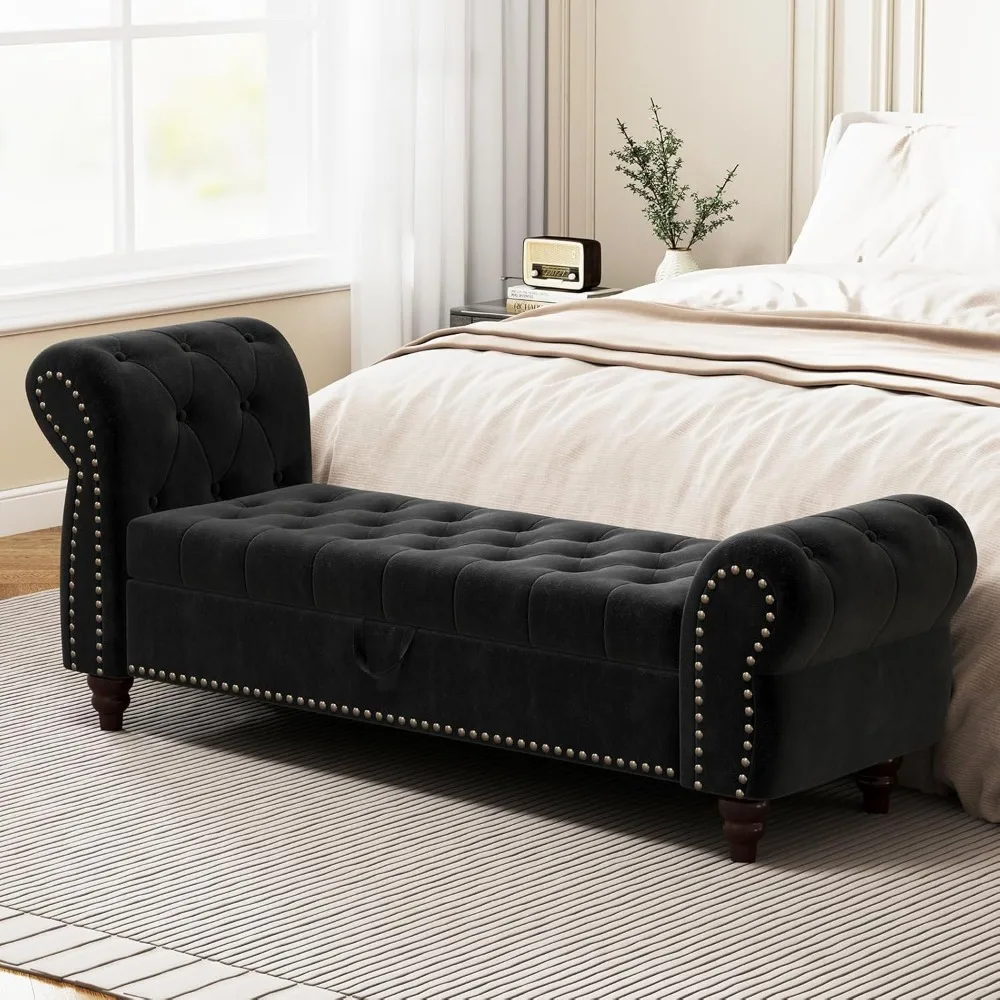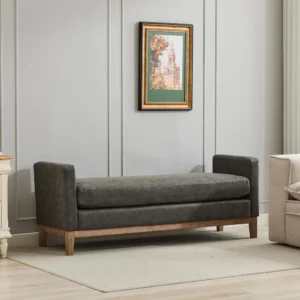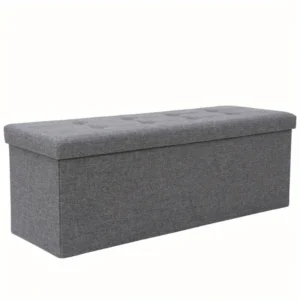Introduction: The Entryway Challenge
The entryway—a small but mighty space that sets the tone for your entire home—often becomes a dumping ground for shoes, bags, coats, and mail. This chaos not only creates visual clutter but also starts and ends each day with unnecessary stress. According to home organization experts, the average person spends nearly 10 minutes daily searching for misplaced items, many of which disappear in entryway disorder.
A well-designed entryway does more than create a positive first impression; it establishes a system that supports your daily routine. By combining storage and seating in this critical space, you can:
- Create an organized landing pad for everyday essentials
- Establish a comfortable spot for putting on and removing shoes
- Reduce morning chaos and evening disorganization
- Enhance your home’s aesthetic appeal from the moment you step inside
- Decrease stress levels associated with cluttered environments
Throughout this guide, we’ll explore practical solutions for blending storage and seating in entryways of all sizes. From classic storage benches to custom built-ins, you’ll discover options that align with your space constraints, design preferences, and organizational needs. Creating functional multi-functional entryway seating is simpler than you might think—and the benefits extend far beyond mere convenience.
Why Your Entryway Needs Both Storage and Seating
The perfect entryway combines practicality with comfort, addressing multiple needs simultaneously. When you integrate both storage and seating into this space, you’re not just solving a clutter problem—you’re elevating your entire home experience.
Space efficiency is perhaps the most obvious benefit, especially in smaller homes. Multi-functional furniture eliminates the need to choose between having a place to sit or having storage—you get both without consuming additional square footage. This is particularly valuable in urban homes where every inch matters.
The organization advantages are equally impressive:
- Designated storage prevents items from migrating throughout your home
- Visible organization systems encourage everyone to maintain order
- Properly sorted essentials make departures and arrivals smoother
- Seasonal items have a proper home when not in use
Having seating available transforms the simple act of entering or leaving home. No more balancing awkwardly on one foot while putting on shoes or dropping packages haphazardly as you remove boots. This small comfort makes a surprising difference in daily quality of life.
Perhaps most importantly, a thoughtfully designed entryway creates a powerful first impression for guests while making you feel more at ease in your own space. The psychological benefits of coming home to an organized, welcoming entryway shouldn’t be underestimated—it creates a clear transition from public to private life.
Dual-purpose entryway seating combines aesthetic appeal with practical functionality, creating a space that works as beautifully as it looks. When visitors enter your home, this attention to detail communicates thoughtfulness and care that extends throughout your living space.
Assessing Your Entryway Space and Needs
Before selecting the perfect storage-seating solution, take time to thoroughly assess your entryway’s dimensions and specific requirements. This foundational step ensures whatever you choose will enhance—rather than hinder—your daily routine.
Start by measuring your available space carefully:
– Width: Measure wall-to-wall at the widest point
– Depth: Determine how far furniture can extend without impeding traffic
– Height: Consider ceiling height for tall units or wall-mounted options
– Doorway clearance: Ensure at least 36 inches (91 cm) remains clear for comfortable passage
Next, analyze your household’s traffic patterns. How many people use this entrance daily? Is this your primary entry point? Do you need a solution that accommodates multiple people simultaneously during morning rushes or evening returns?
Create a detailed inventory of items that need storage in this area:
– Number of pairs of shoes per household member (seasonal and everyday)
– Types of outerwear (bulky coats vs. light jackets)
– Accessories (hats, scarves, gloves)
– Bags (backpacks, purses, work bags)
– Everyday essentials (keys, mail, dog leashes)
– Seasonal items (umbrellas, sunscreen, winter gear)
Consider your seating requirements honestly. Do you need a place for multiple people to sit simultaneously, or is a single seat sufficient? How frequently will this seating be used? Do you need seating comfortable enough for longer tasks like phone calls or brief enough just for shoe changes?
Your aesthetic preferences matter too. The entryway creates the first impression of your home’s interior style. Take note of your existing décor elements, color palette, and overall design language so your new addition complements rather than clashes.
Finally, establish your budget parameters. Quality entryway solutions range widely in price, and understanding your comfort zone helps narrow options. Remember that organizing narrow entryway space often requires creative thinking but doesn’t necessarily demand premium pricing.
Classic Storage Benches: The Versatile Solution
The storage bench represents the quintessential solution for entryways, offering the perfect marriage of seating and storage in a single, elegant piece. Its enduring popularity stems from its versatility, efficient use of space, and ability to adapt to various decor styles from farmhouse to ultra-modern.
Storage benches come in several distinct configurations, each with unique advantages:
Lift-top benches
– Provide concealed, dust-free storage
– Offer clean, uncluttered appearance
– Ideal for storing seasonal items or less-frequently used belongings
– Hydraulic hinges prevent slamming and enhance safety
– Entire storage area accessible with single motion
Open cubby/shelf benches
– Allow immediate visual access to contents
– Provide ventilation for damp shoes or outdoor gear
– Enable decorative display of attractive baskets or bins
– Easier access without lifting a heavy lid
– Create visual interest through layered organization
Drawer benches
– Offer compartmentalized storage for smaller items
– Allow access without disturbing seating surface
– Provide better organization for multiple family members
– Smooth-gliding hardware ensures easy operation
– Prevent items from getting lost in larger storage areas
Combination benches
– Integrate multiple storage types for maximum versatility
– Address varied storage needs simultaneously
– Allow customized organization systems
– Provide solutions for both display and concealment
– Often include specialized compartments for shoes, accessories, etc.
For optimal comfort, look for benches with a seated height between 17-19 inches (43-48 cm). Width typically ranges from 36-60 inches (91-152 cm), with depth between 15-20 inches (38-51 cm). These dimensions ensure comfortable seating while maintaining a proportional fit within standard entryways.
Construction quality makes a significant difference in longevity, especially for a piece that endures daily use. Premium benches feature solid wood frames, reinforced joinery, quality hardware, and proper support structures. Engineered woods should be high-density with quality veneers for durability. These construction details may not be immediately visible but become apparent through years of steady use.
Entryway benches with hidden storage represent the most popular configuration, offering the clean aesthetic of traditional seating with the practicality modern homes demand. When properly constructed, these pieces become both functional workhorses and elegant design statements that welcome you home.
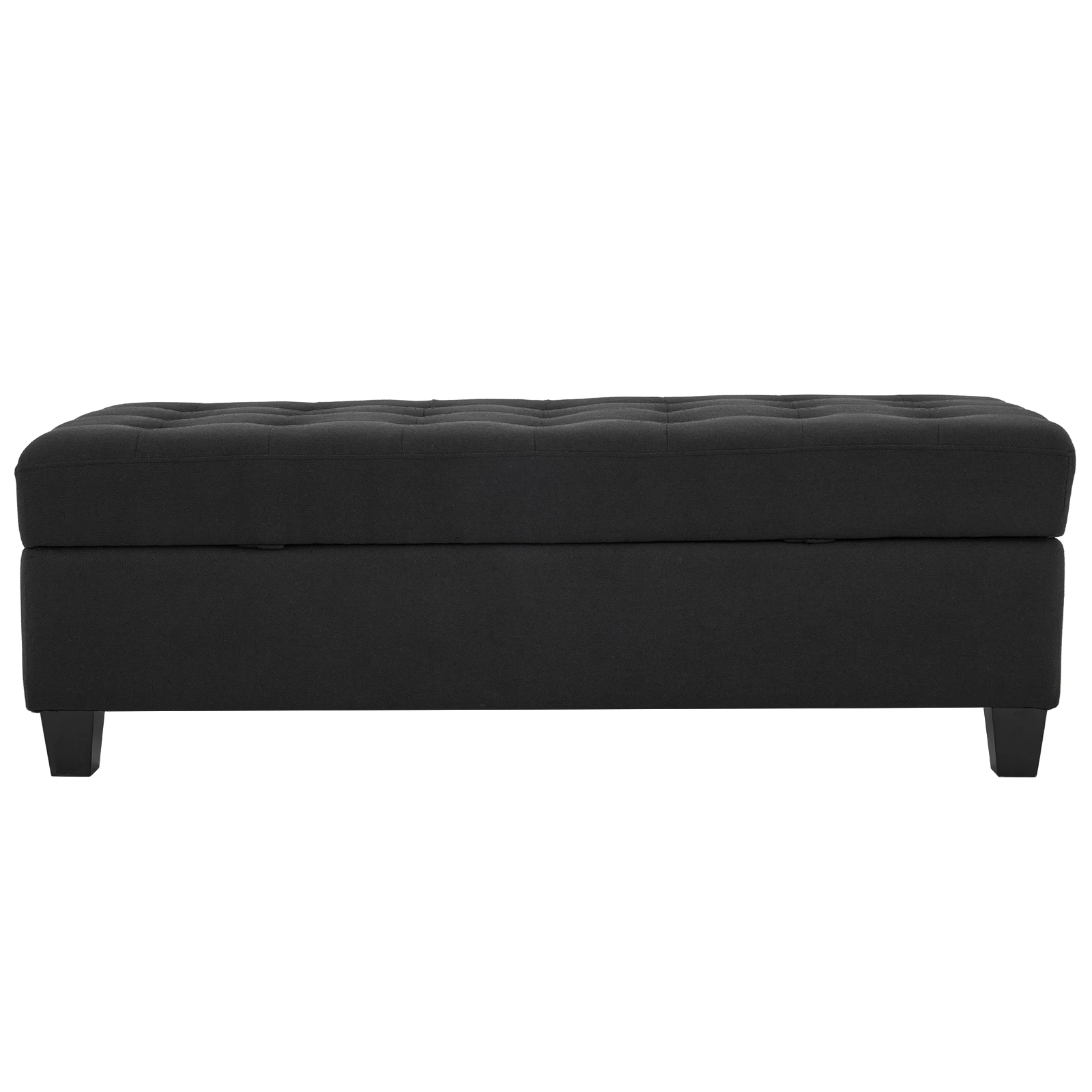
Hall Trees and Mudroom Units: All-in-One Solutions
For those seeking the ultimate entryway organization system, hall trees and mudroom units deliver comprehensive solutions that address multiple storage challenges simultaneously. These substantial pieces combine seating with both horizontal and vertical storage options, maximizing your entryway’s organizational capacity without consuming excessive floor space.
Traditional hall trees feature:
– A bench base for comfortable seating
– Overhead hooks for coats, bags, and accessories
– Upper shelving or cabinets for seasonal items
– Lower storage for shoes and everyday essentials
– Often a mirror for last-minute appearance checks
Modern mudroom units expand on this classic design with even more specialized storage features:
- Individual cubbies or lockers for family members
- Specialized shoe storage compartments with ventilation
- Mail and key organizers
- Additional closed cabinetry for private storage
- Charging stations for electronic devices
The vertical design of these units maximizes storage per square foot of floor space—a crucial advantage for modest homes. By building upward rather than outward, hall trees and mudroom units can double or even triple the storage capacity of a simple bench while maintaining a relatively compact footprint.
When selecting a hall tree, consider the overhead height carefully. The highest hooks should be comfortable to reach (typically 60-72 inches/152-183 cm from the floor) without straining. Bench height should maintain the standard 17-19 inches (43-48 cm) for comfortable seating.
These comprehensive units shine in family homes where multiple people need dedicated storage. Having assigned hooks, cubbies, or baskets for each family member simplifies morning routines and prevents the “where’s my backpack?” scramble before school or work.
Hall trees and mudroom units constructed from solid hardwoods like oak, maple, or walnut offer exceptional durability for high-traffic areas. Quality units feature reinforced joinery at stress points like hook attachments and bench connections. Look for adjustable levelers on the base to accommodate uneven flooring—a common issue in entryways.
Entryway benches with coat racks provide a classic yet highly functional approach to organization that has remained relevant through changing design trends. These timeless pieces combine the best aspects of specialized storage with the warmth and welcome of traditional entryway furniture.
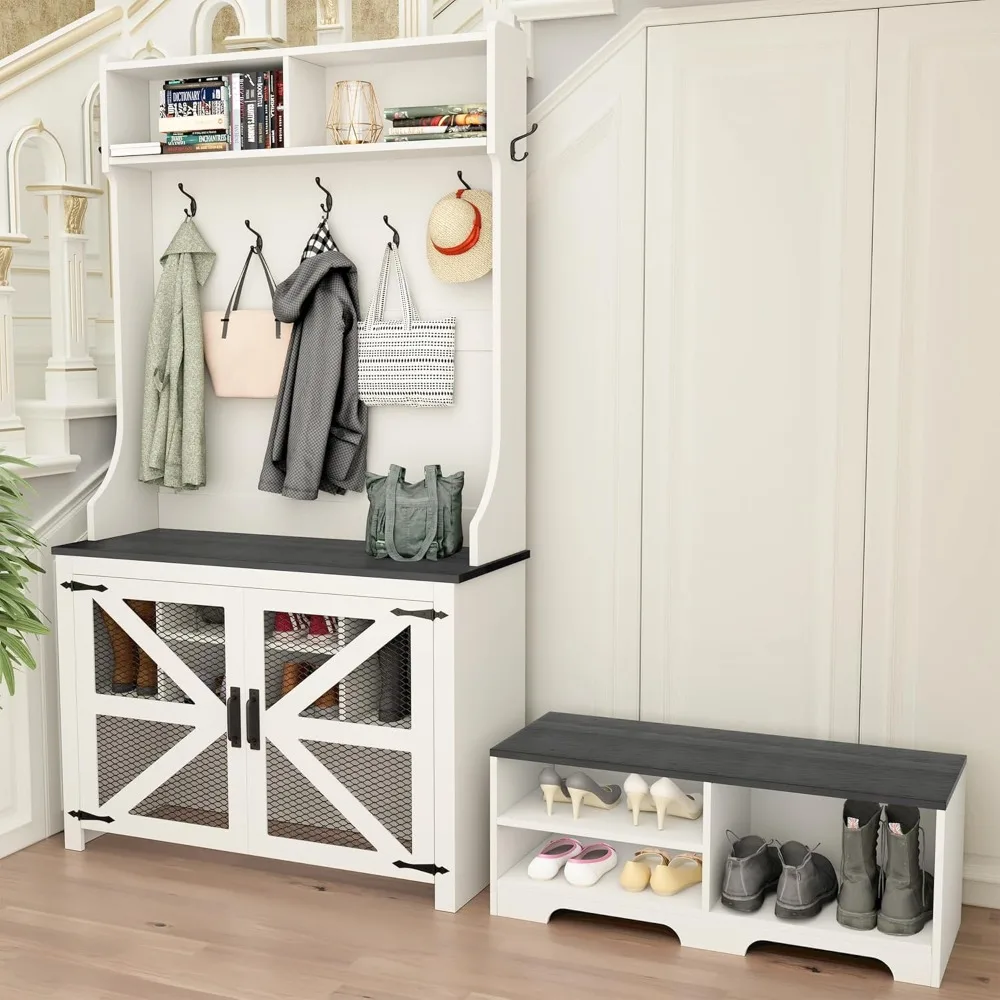
Space-Saving Wall-Mounted and Floating Options
When floor space is at a premium or you prefer a more contemporary aesthetic, wall-mounted and floating storage-seating combinations offer elegant solutions. These innovative designs create the impression of more space while delivering exceptional functionality.
Floating benches anchor to the wall without visible supports, creating a clean, modern look that makes small entryways appear more spacious. The open area beneath allows for shoe storage, small baskets, or simply visual breathing room. This design approach is particularly effective in:
- Narrow entryways where bulky furniture would create obstacles
- Modern or minimalist homes where clean lines are preferred
- Spaces where highlighting beautiful flooring is desirable
- Areas where easy floor cleaning is a priority
Key considerations for wall-mounted options include:
- Structural support: Installation must connect to wall studs or use appropriate anchors rated for both the bench’s weight and the additional weight of seated individuals
- Weight capacity: Quality floating benches clearly specify weight limits, typically between 250-400 lbs (113-181 kg) when properly installed
- Depth considerations: Even floating benches need sufficient depth (15-18 inches/38-46 cm) for comfortable seating
- Complementary components: Coordinate with floating shelves, wall-mounted coat hooks, or hanging cabinets to complete the storage system
Creative combinations can transform even the smallest entryways. Consider a floating bench with hooks and a small shelf above, creating a complete entry system with minimal visual weight. Alternatively, install a narrow floating bench beside a wall-mounted cabinet for both seating and enclosed storage.
Installation typically requires:
– Locating and marking wall studs
– Using a level to ensure proper alignment
– Securing mounting brackets to studs with lag bolts
– Attaching the bench to the mounting system
– Testing weight capacity before regular use
For the most minimalist approach, consider fold-down benches that can be tucked away when not in use. These space-saving marvels are perfect for extremely tight spaces where permanent seating would impede traffic flow.
Multi-use furniture for small foyers like floating benches demonstrates how thoughtful design can overcome space limitations without sacrificing functionality. When wall-mounted options are properly installed, they provide surprising strength and stability while maintaining a light, airy aesthetic that enhances small spaces.
Materials and Durability: Making a Long-Term Investment
The materials used in your entryway furniture determine not only its aesthetic appeal but also its longevity in a high-traffic area. Understanding material properties helps you make an informed investment in pieces that will maintain their beauty and functionality for years to come.
| Material | Durability | Maintenance | Best For | Considerations |
|---|---|---|---|---|
| Solid Hardwood | Excellent (25+ years) | Moderate | Long-term investment, traditional homes | More expensive, may show scratches but can be refinished |
| Engineered Wood | Good (10-15 years) | Easy | Budget-conscious buyers, modern designs | Look for high-density construction, quality veneers |
| Metal | Very Good (20+ years) | Easy | Industrial, contemporary styles | Cold to touch, may need cushions for comfort |
| Upholstered | Variable (5-15 years) | Moderate to High | Comfort-focused designs | Choose performance fabrics, removable covers ideal |
| Composite Materials | Good (10-15 years) | Very Easy | Heavy use areas, family homes | Look for eco-friendly options, reinforced construction |
Beyond the primary material, construction details significantly impact durability. Quality pieces feature:
- Reinforced corner joints (dovetail or mortise-and-tenon for wood)
- Rust-resistant hardware in metal components
- Properly dried woods to prevent warping or cracking
- Protective finishes appropriate to the material
- Strong weight-bearing supports for seating areas
For wooden pieces, look for kiln-dried hardwoods like oak, maple, walnut, or mahogany, which resist denting and wear better than softer woods like pine. If choosing engineered wood products, seek out furniture-grade plywood rather than particleboard for stress points like bench seats.
Metal components should feature welded (rather than just bolted) connections at stress points, with proper finishing to prevent rust or corrosion. Powder-coated finishes typically outlast painted metal surfaces in high-touch areas.
For upholstered elements, performance fabrics offer significant advantages for entryway use. Look for high rub counts (15,000+ Wyzenbeek double rubs), stain-resistant treatments, and removable covers for cleaning. Leather and quality vinyl alternatives provide durable, wipeable surfaces ideal for entryway benches.
Regular maintenance extends furniture life significantly. Wood benefits from occasional polishing and keeping away from direct sunlight. Metal should be kept dry to prevent rust. Upholstery needs regular vacuuming and prompt attention to spills. Most importantly, respecting weight limits and proper use prevents structural damage over time.
Our entryway benches collection features carefully selected materials that balance aesthetic appeal with the durability demands of this hard-working space. Investing in quality materials pays dividends through years of reliable service and maintained appearance.
Styling Your Storage-Seating Combination
Once you’ve selected the perfect functional entryway solution, thoughtful styling transforms it from merely practical to genuinely inviting. The right decorative elements enhance both the appearance and usability of your entryway furniture while creating a cohesive connection to your home’s overall aesthetic.
Start with comfort considerations that also serve as style statements:
– Add cushions or bench pads in colors that complement your decor
– Include throw pillows for both comfort and seasonal color updates
– Layer textures through baskets, fabrics, and decorative elements
– Incorporate both hard and soft surfaces for visual interest
Personal touches make your entryway uniquely yours:
– Display a few meaningful objects or small framed photos
– Include a small plant or fresh flowers to bring life to the space
– Add a distinctive tray or bowl for keys and small essentials
– Consider a scented element like candles or diffusers for a welcoming fragrance
Complementary elements enhance both function and appearance:
– Position a mirror above or near seating to create the illusion of more space
– Install proper lighting that illuminates the entire area (overhead plus accent lighting)
– Add wall art that introduces color and personality
– Consider a slim console table if space allows for additional display surface
Color coordination creates a cohesive impression:
– Choose container colors (baskets, bins) that either complement or purposefully contrast with your furniture
– Repeat accent colors from adjacent rooms for visual flow
– Use textiles to introduce color that can be easily changed seasonally
– Consider the undertones of woods and metals to ensure they work together harmoniously
Even highly functional items can contribute to style when thoughtfully selected. Beautiful hooks, decorative baskets, and artful containers elevate organizational elements from purely practical to design-enhancing.
For maximum impact, maintain a careful balance between function and decoration. Too many decorative items can create clutter and undermine the organizational benefits of your entryway system. Aim for a curated selection of meaningful pieces rather than numerous small objects.
Our entryway benches with storage are designed to serve as beautiful foundations for your personal styling approach, blending seamlessly with various decor aesthetics while providing essential functionality.
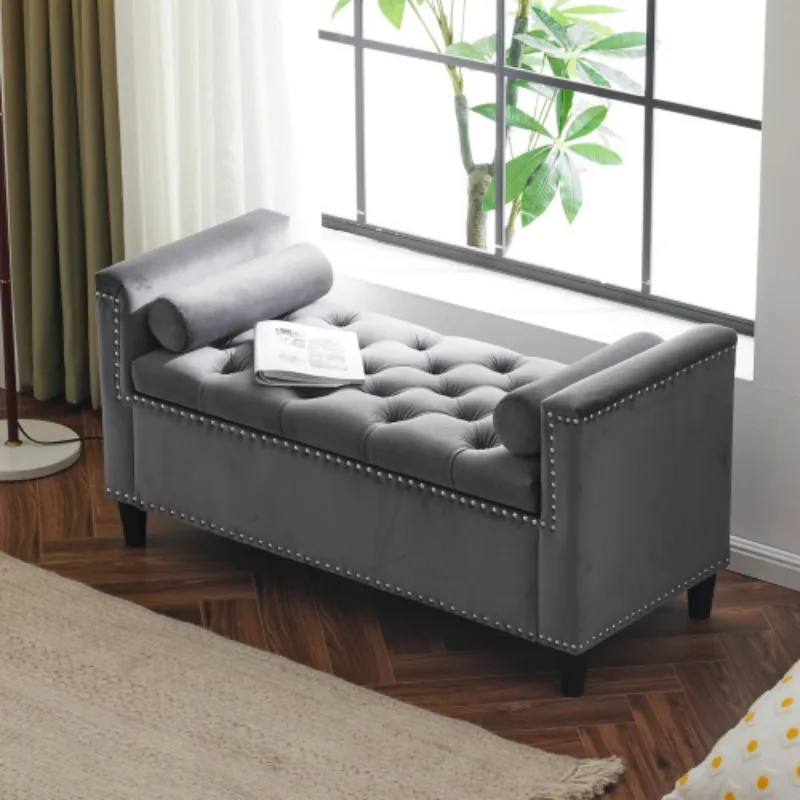
Smart Organization Systems for Maximum Efficiency
Even the most beautiful storage-seating combination requires thoughtful organization to function at its best. Implementing smart systems ensures your entryway remains clutter-free while accommodating all your daily essentials.
Begin by strategically allocating different items to appropriate storage zones:
– Lower areas for shoes and heavy items
– Mid-level for frequently accessed items (bags, daily accessories)
– Upper areas for seasonal or less-frequently used items
– Hooks at appropriate heights for different family members
Organizational accessories dramatically enhance functionality:
– Baskets and bins contain small items while adding texture and color
– Shoe organizers prevent footwear pileups and protect bench interiors
– Trays corral small items like keys and sunglasses
– Labels (elegant for adults, playful for children) help maintain systems
– Dividers customize larger storage spaces for specific needs
For multi-person households, consider these family-friendly approaches:
– Assign specific hooks, bins, or cubbies to each family member
– Use color-coding for quick visual identification
– Position children’s items at accessible heights to encourage independence
– Create separate zones for school items, work essentials, and shared gear
Seasonal rotation keeps entryways functional year-round:
– Store off-season items in less accessible areas (upper shelves, rear of benches)
– Maintain a small transition section during seasonal changes
– Use vacuum bags for bulky winter items during summer months
– Rotate entryway accessories (heavier boot trays in winter, lighter baskets in summer)
Developing consistent daily habits makes maintaining organization simple:
– Empty bags of unnecessary items before hanging them up
– Return items to designated spots immediately upon entering
– Take one item to its proper location elsewhere in the house each time you leave the entryway
– Implement a weekly 10-minute reset to maintain systems
These organizational strategies work particularly well with organized busy entryway furniture designed with versatile storage options. Remember that the most effective organization system is one you can maintain consistently—simplicity often triumphs over complexity for long-term success.
Solutions for Challenging Entryway Spaces
Not every home features a spacious, well-defined entryway. Challenging spaces require creative approaches to combine storage and seating without compromising function or creating obstacles.
For narrow entryways (under 4 feet/1.2 meters wide):
– Choose slim-profile benches no deeper than 12-14 inches (30-36 cm)
– Utilize vertical space with tall, narrow cabinets or wall-mounted solutions
– Select corner units that tuck neatly into otherwise unused space
– Consider a bench that spans partially under a console table for space efficiency
– Use mirrors strategically to create the illusion of width
For entryways with awkward angles or architectural features:
– Explore custom-cut bench options that follow wall contours
– Use modular pieces that can be arranged to work around obstacles
– Create L-shaped configurations with complementary pieces
– Focus on floating or wall-mounted options that don’t rely on square corners
– Convert nooks or recesses into built-in seating with added storage
For homes without defined foyers:
– Create visual boundaries with strategic furniture placement
– Use area rugs to define the entryway zone
– Position seating perpendicular to the entry door to create a sense of enclosure
– Select furniture that coordinates with adjacent room decor for visual flow
– Consider room dividers with integrated storage and seating functions
For extremely limited spaces:
– Explore fold-down or convertible options that can be compacted when not in use
– Investigate dual-purpose furniture (storage ottomans that can serve as occasional seating)
– Mount slim floating shelves at seat height with storage above and below
– Consider vertical storage towers with small seating nooks
– Utilize under-stair areas for custom storage-seating combinations
Corner entryway benches offer particularly clever solutions for challenging spaces, transforming awkward corners into functional transitions while maximizing storage capacity. These specialized pieces fit where standard rectangular furniture cannot, making use of otherwise wasted space.
Entryway Bench with Cushion, Mudroom Bench with Cushion, Shoe Bench for Entryway
$1,186.63 Select options This product has multiple variants. The options may be chosen on the product pageCoat Rack Shoe Bench, Corner Entryway Bench, Corner Hall Tree, Shoe Bench for Entryway
$313.58 Select options This product has multiple variants. The options may be chosen on the product pageEntryway Bench with Back, Modern Entryway Bench, Shoe Bench for Entryway
Price range: $463.13 through $474.44 Select options This product has multiple variants. The options may be chosen on the product pageShoe Storage Bench for Entryway
$459.02 Select options This product has multiple variants. The options may be chosen on the product pageEntryway Bench with Shelf Storage, Shoe Bench for Entryway, Shoe Storage Bench
$194.08 Select options This product has multiple variants. The options may be chosen on the product pageCorner Entryway Bench, Entryway Bench with Cushion, Modern Entryway Bench, Shoe Bench for Entryway
$476.34 Select options This product has multiple variants. The options may be chosen on the product page
Remember that in challenging spaces, multi-functionality becomes even more important. Look for pieces that serve at least three purposes simultaneously (seating, storage, and perhaps a surface for display or key drop) to maximize value per square foot.
Are Custom Built-Ins Worth the Investment?
Custom built-in storage and seating solutions represent the premium option for entryway organization. While requiring greater initial investment, these tailored creations offer unique advantages worth considering for many homeowners.
When do custom built-ins make financial sense?
Custom solutions become cost-effective when:
– Your entryway has unusual dimensions or architectural features that standard furniture can’t accommodate
– You plan to remain in your home long-term (5+ years)
– Ready-made options would require significant compromises in functionality
– Your storage needs are highly specific or extensive
– You’ve invested significantly in your home’s overall design
What return on investment can you expect?
Quality built-ins typically return 70-80% of their cost in home value, with additional returns in daily functionality and enjoyment. They’re particularly valuable in:
– Higher-end homes where buyers expect customized features
– Homes with challenging layouts where standard furniture wastes space
– Areas with minimal closet space where storage adds significant utility
The process of designing custom entryway solutions involves:
– Careful measurement of the space, including noting outlets, vents, and architectural features
– Detailed inventory of items needing storage
– Consideration of traffic patterns and daily routines
– Material selection that complements existing architectural elements
– Decisions about built-in vs. semi-custom options (some cabinetry companies offer modifiable standard units)
Comparing value considerations:
Standard furniture advantages include mobility, lower initial cost, and the ability to take it with you when moving. Custom built-ins offer perfect sizing, maximized storage efficiency, seamless integration with architecture, and potential home value increases.
For a middle-ground approach, consider semi-custom options or working with hall trees and coat rack benches that can be anchored to walls for a built-in appearance while maintaining some flexibility for future changes.
How to Keep Your Entryway System Functional All Year Round
Even the most thoughtfully designed entryway requires regular maintenance to remain functional through changing seasons and evolving family needs. Implementing simple routines prevents organization breakdown and extends the life of your furniture.
Seasonal rotation checklist:
Spring/Summer:
– Store heavy winter coats and boots in less accessible storage
– Bring rain gear, light jackets, and sun protection to primary hooks and bins
– Clean and treat winter boots before storing
– Replace heavy fabrics with lighter, brighter textiles
– Deep clean entryway furniture and floors
Fall/Winter:
– Rotate summer gear to secondary storage locations
– Position winter accessories (gloves, hats, scarves) in easily accessible containers
– Add boot trays or mats for wet/snowy footwear
– Introduce more substantial cushions and throws for comfort
– Ensure adequate lighting for darker winter days
Material-specific maintenance:
- Wood surfaces: Dust weekly, clean with appropriate wood cleaner quarterly, polish/wax annually
- Metal components: Wipe down regularly, check for rust spots, apply protective coating if needed
- Upholstered elements: Vacuum weekly, spot clean promptly, deep clean seasonally
- Baskets and fabric bins: Empty and clean every few months to prevent dust accumulation
- Hardware: Tighten any loose hinges, knobs, or pulls as needed
Adapting to changing household needs:
- Reassess storage allocation as children grow and activities change
- Modify organizational systems when they no longer serve your routine
- Consider height adjustments for hooks and storage as needed
- Update labeling systems to reflect current household patterns
Preventing organizational breakdown:
- Schedule brief weekly reset sessions (15 minutes maximum)
- Immediately rehome items that migrate from their proper spots
- Limit entryway accumulation with a “one in, one out” approach for seasonal items
- Involve all household members in maintaining the system
With proper care and occasional updates, shoe storage benches and other entryway furniture continue providing organization and convenience for many years, adapting to your household’s changing needs through different seasons and life stages.
Frequently Asked Questions About Entryway Storage and Seating
What’s the ideal bench height for comfortable seating?
The optimal height for entryway seating is between 17-19 inches (43-48 cm) from the floor. This range accommodates most adults comfortably while allowing easy standing up and sitting down. For households with elderly members or those with mobility concerns, benches closer to 19 inches (48 cm) may be preferable, as higher seating positions require less effort to rise from.
How much weight can storage benches typically hold?
Quality storage benches generally support between 250-400 pounds (113-181 kg) of seated weight. Storage capacity varies widely, with internal compartments typically holding between 50-150 pounds (23-68 kg) depending on construction. Always check manufacturer specifications for your particular piece, as exceeding weight limits can compromise both safety and longevity.
Can entryway furniture be child and pet-friendly?
Absolutely. Look for pieces with rounded corners, sturdy construction, and non-toxic finishes. For homes with children, soft-close hinges prevent pinched fingers, while washable fabrics or leather withstand inevitable spills. Pet-friendly options include scratch-resistant materials and cushions with removable, washable covers. Some benches even incorporate pet-specific features like built-in bed nooks or leash hooks.
What’s the best material for entryways in wet climate areas?
For consistently damp climates, select marine-grade woods like teak or cedar, metal with rust-resistant coatings, or high-quality composites designed for outdoor use. Avoid untreated particleboard or MDF, which can warp with moisture exposure. Include features like drainage systems in shoe storage areas and moisture-resistant liners in enclosed storage compartments. Removable trays for wet boots also help protect furniture interiors.
How do I maximize storage in extremely small spaces?
For minimal spaces, prioritize vertical storage with narrow-profile pieces. Wall-mounted options eliminate floor footprints entirely. Consider furniture that serves multiple functions, like mirror cabinets with hidden storage or slim console tables with incorporated seating. Corner units maximize otherwise wasted space, while hanging organizers on doors or walls add storage without consuming floor area. Remember that in tiny spaces, negative space is as important as storage—avoid overcrowding.
Are hall trees outdated or still practical?
Modern hall trees remain extremely practical despite their traditional origins. Contemporary designs have evolved to include device charging stations, specialized storage for today’s accessories, and cleaner lines that complement current home styles. The fundamental concept—combining vertical and horizontal storage with seating—addresses timeless entryway needs regardless of changing design trends. Today’s hall trees offer the same functionality with updated aesthetics suitable for modern homes.
Transforming First Impressions: The Impact of a Well-Organized Entryway
A thoughtfully designed entryway does more than simply store your belongings—it transforms daily experiences and shapes how you and your guests perceive your entire home. By successfully blending storage and seating, you’ve created a space that offers both practical function and welcoming comfort.
The benefits extend far beyond organization. A well-designed entryway reduces daily stress by eliminating the frustrating search for essentials. It creates smoother transitions between outside activities and home life. For families, it establishes clear systems that encourage everyone to maintain order. Perhaps most importantly, it offers a moment of calm—a place to pause, sit, and transition from one part of your day to the next.
Consider the psychological impact of entering a home where everything has its place versus one where clutter creates immediate visual chaos. Your entryway literally sets the tone for your entire home experience. When designed thoughtfully, this space signals that you’ve created an environment where both functionality and comfort are prioritized.
The solutions we’ve explored throughout this guide—from classic storage benches to custom built-ins—demonstrate that practical organization doesn’t require sacrificing style or comfort. By understanding your specific needs and space constraints, you can select or create an entryway system that genuinely enhances your daily life.
Remember that the most beautiful entryway is one that works seamlessly with your lifestyle, adapting to changing needs while maintaining both order and welcome. With the right combination of storage and seating, your entryway becomes not just a passageway but a purposeful space that enhances your entire home experience.

